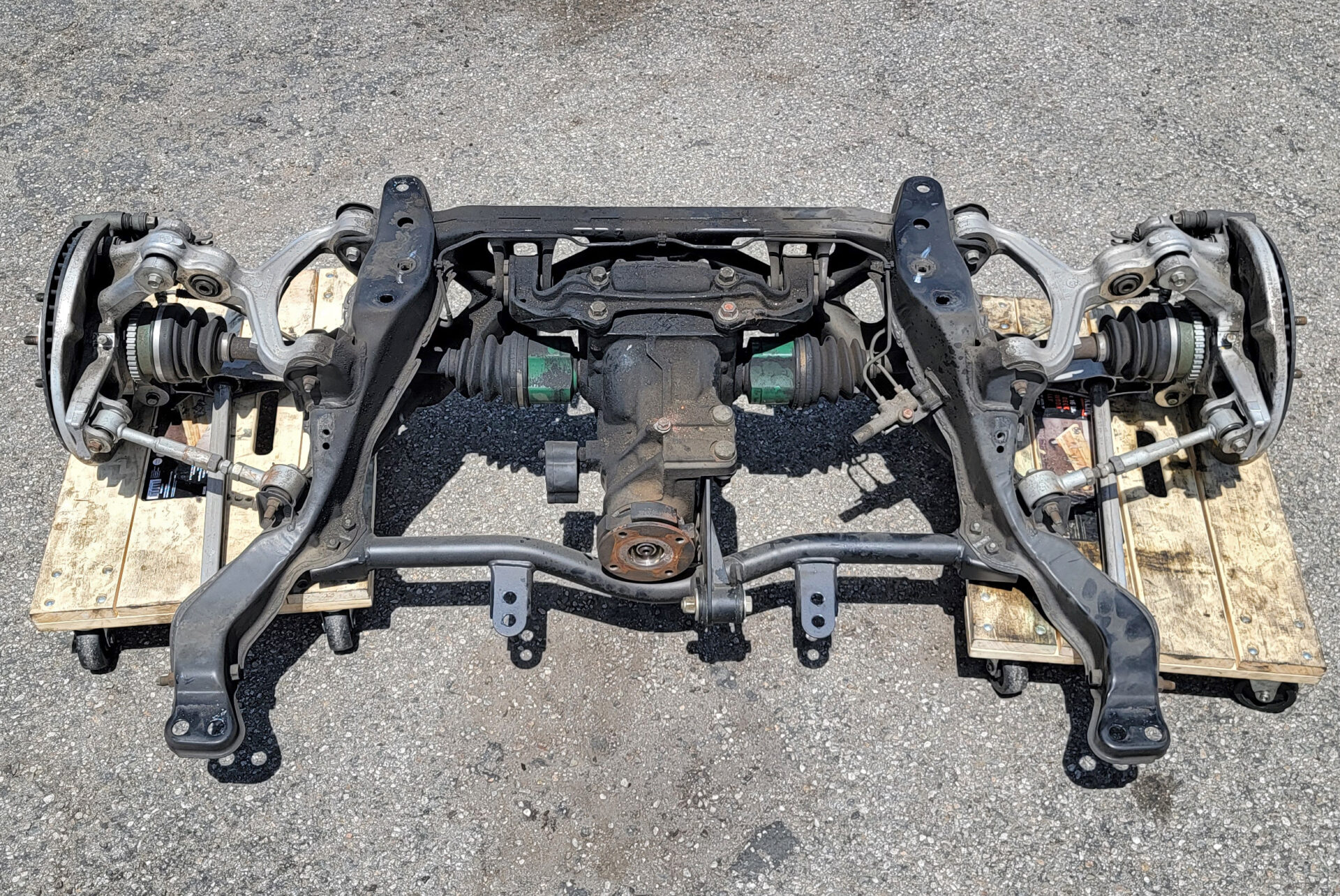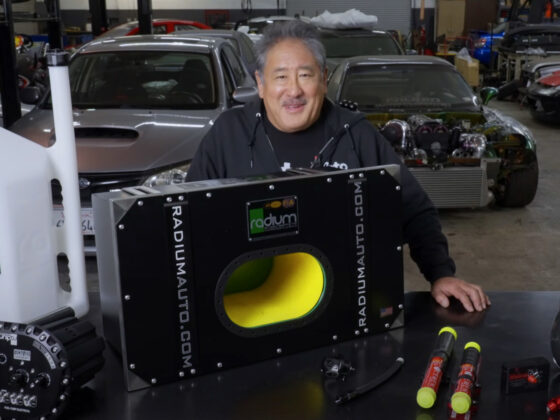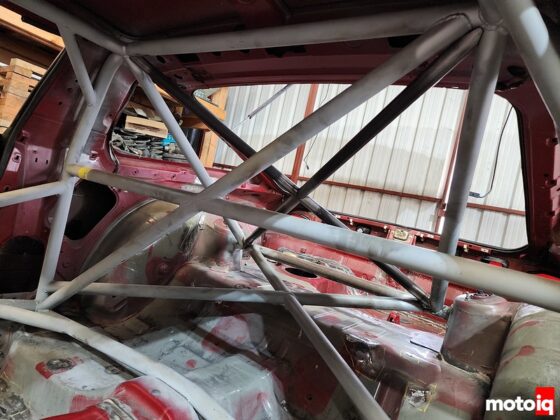WHAT CAUSES FAILURES?
Torque is what breaks things, however most documented failures online reference how much horsepower a car was making, not the torque (which is generally somewhere around 75-100hp higher than the torque figure on a 13B). It is extremely difficult to determine the power and torque limit of a given component because many factors affect the point where something will fail, such as how the car is driven, if the car is drag raced, road raced, drifted, or driven on the street, the tires, drivetrain bushings, suspension bushings, play in the ball joints, bracing, clutch, shocks, wheel hop, etc…
Failures can happen from either peak stress or fatigue. Fatigue happens over time where micro-cracks grow with heat cycles and repeated stress, eventually leading to a failure. In practicality, this is all but impossible to predict The stock LSD or diff housing might be fine at a certain power level for a while, but it will break at some point whether that’s on the 2nd drag racing pass, the 20th, or in year 2. Also keep in mind that old parts are not as strong as they were when new. The FD RX-7 is now 30-year-old, so parts might now break at levels that were fine 15 years ago.
Wheel hop is a killer of components because it is a harmonic resonance between kinetic and static friction that can multiply the force by 3-times! Replacing the soft rubber motor and diff mounts with solid or high durometer bushings can reduce wheel hop, but there is a trade-off between reduced wheel hop and increasing shock and torsional strain to the diff housing from the elimination of the shock-absorbing abilities of the stock rubber bushings. Polyurethane is usually a sweet spot for NVH and control.
 After upgrading the stock Torsen LSD, the FD’s diff housing/casing is usually next to break around 450whp, and has been known to fail at 350-400whp on drag radials. The center of the stock cast iron diff housing is very thin to keep the overall vehicle weight down for handling. While there are no issues at stock power levels, drag racing on sticky tires or running nearly double the stock output pushes the diff housing beyond its limit and they start to fail. This is when bracing the differential becomes a must.
After upgrading the stock Torsen LSD, the FD’s diff housing/casing is usually next to break around 450whp, and has been known to fail at 350-400whp on drag radials. The center of the stock cast iron diff housing is very thin to keep the overall vehicle weight down for handling. While there are no issues at stock power levels, drag racing on sticky tires or running nearly double the stock output pushes the diff housing beyond its limit and they start to fail. This is when bracing the differential becomes a must.
 The Hokkaido-based Carshop Dream team that campaigned their “Lotas 7” FD RX-7 in the World Time Attack found out the limitations of the stock cast iron differential the hard way. Despite using an aftermarket LSD, the diff housing could not handle the stresses of road racing with 600whp.
The Hokkaido-based Carshop Dream team that campaigned their “Lotas 7” FD RX-7 in the World Time Attack found out the limitations of the stock cast iron differential the hard way. Despite using an aftermarket LSD, the diff housing could not handle the stresses of road racing with 600whp.
 There are aftermarket braces and cradles on the market that try to address this issue with varying levels of effectiveness. Aftermarket braces that support the front of the differential fundamentally change the design of the OEM drivetrain, and do far more than upgrading the diff bushings alone.
There are aftermarket braces and cradles on the market that try to address this issue with varying levels of effectiveness. Aftermarket braces that support the front of the differential fundamentally change the design of the OEM drivetrain, and do far more than upgrading the diff bushings alone.
 The Sikky PPF / Differential Brace that we installed reinforces Power Plant Frame (PPF) or can replace it entirely when using a traditional transmission mount. This type of brace constrains the movement of the front of the diff and transfers the upward force/load of the differential snout directly into the chassis. This limits and alleviates the stress on the diff housing and PPF caused by deflection, but the load is now directly transmitted into the housing which remains the weak link, where the diff is stressed internally where the leverage of the pinion gear attempts to tear the housing in half at the thinnest point near the front diff mount.
The Sikky PPF / Differential Brace that we installed reinforces Power Plant Frame (PPF) or can replace it entirely when using a traditional transmission mount. This type of brace constrains the movement of the front of the diff and transfers the upward force/load of the differential snout directly into the chassis. This limits and alleviates the stress on the diff housing and PPF caused by deflection, but the load is now directly transmitted into the housing which remains the weak link, where the diff is stressed internally where the leverage of the pinion gear attempts to tear the housing in half at the thinnest point near the front diff mount.




5 comments
Awesome update and you convinced me that upgrading the diff is the right move. This car is going to be a monster!
I love seeing all the work and choices going into this! I’m excited to see it running!
I noted in a separate video that the ronin front bridge once welded in may interfere with the existing brake lines. Appreciate any update on this as you install.
The Eaton Detroit TrueTrac is also used in both of the Project Mustangs!
https://motoiq.com/project-grey-mustang-5-0-part-5-putting-the-power-down-with-eaton/
I might note that this article applies to many other cars besides FD’s